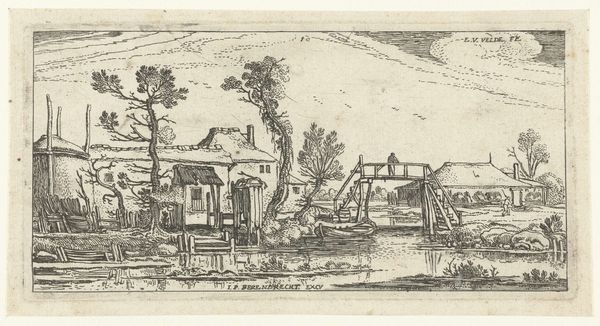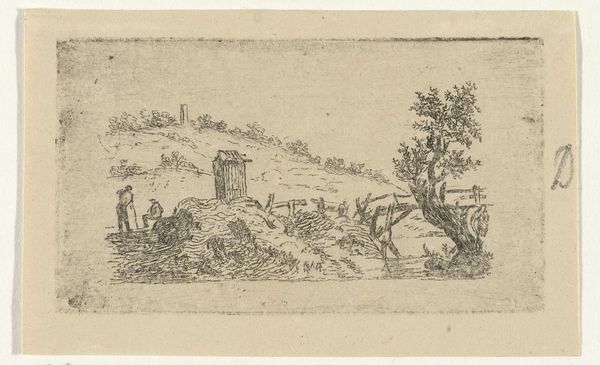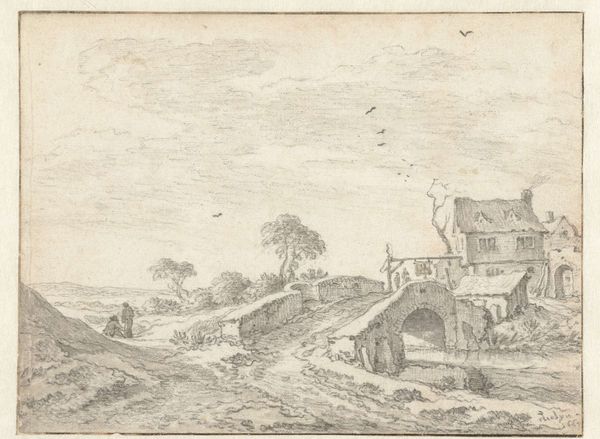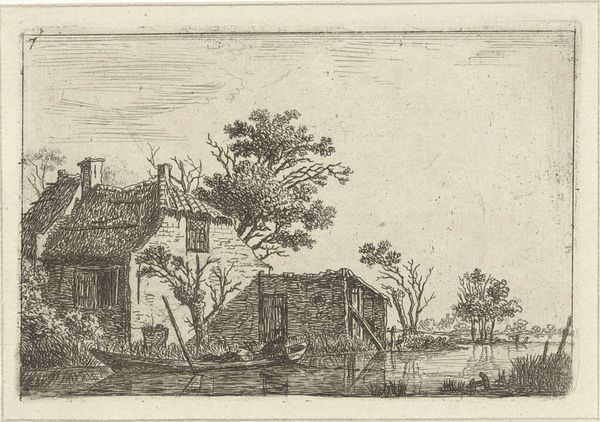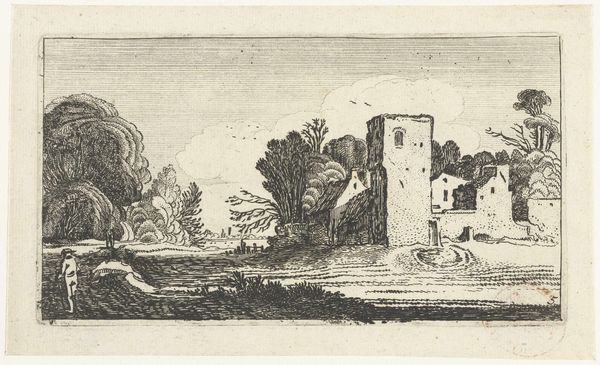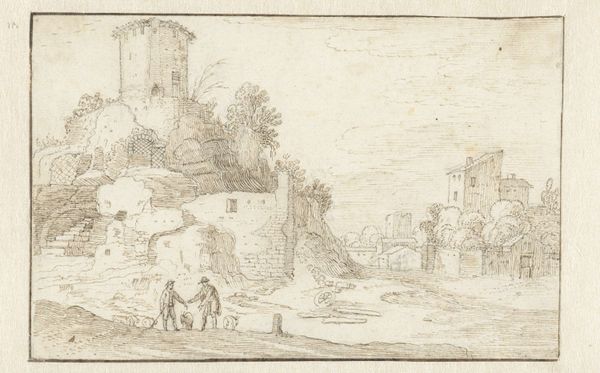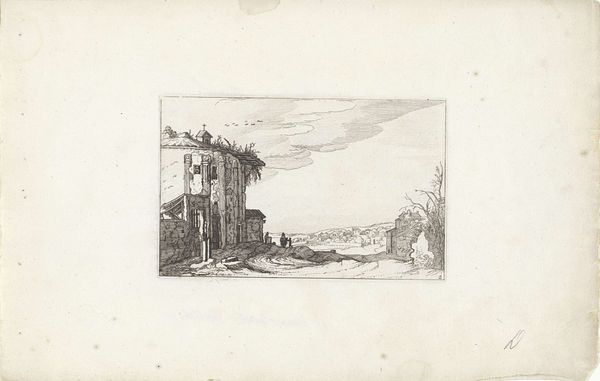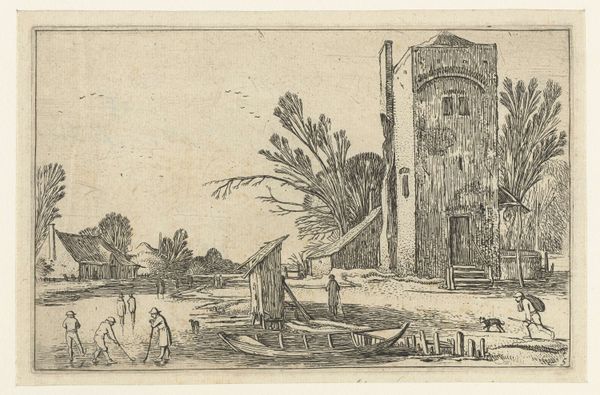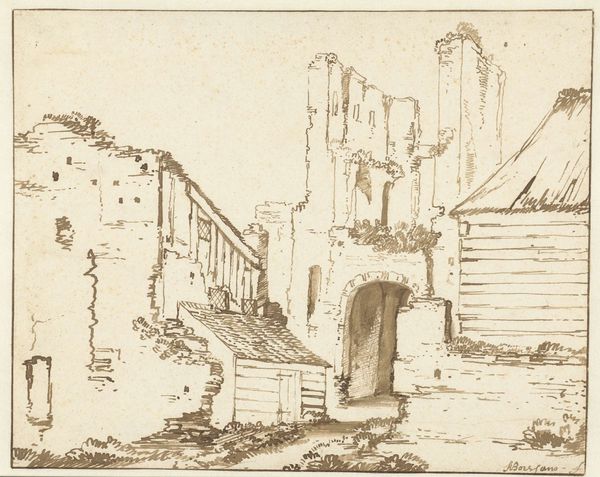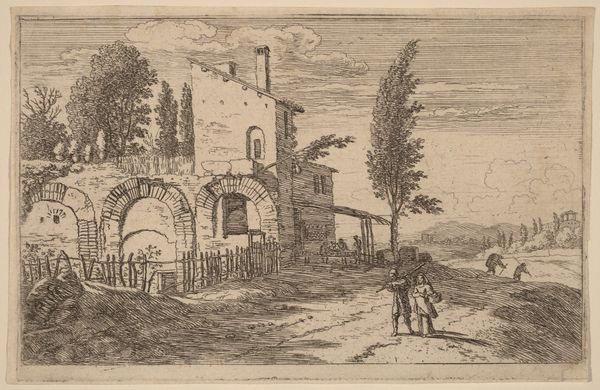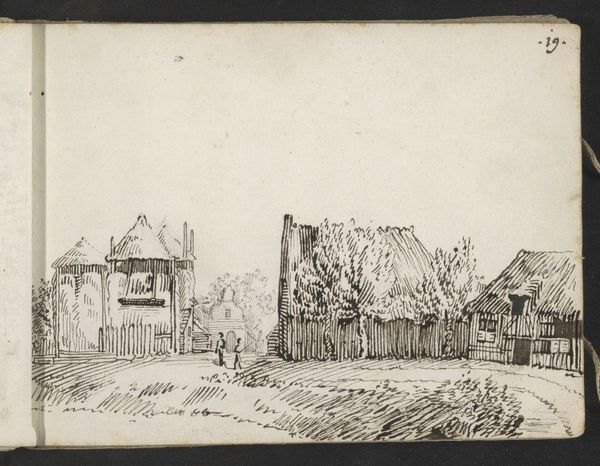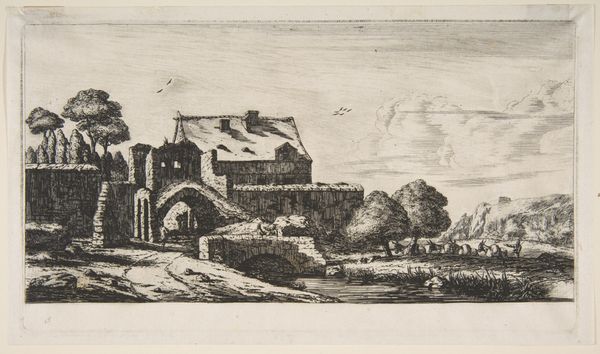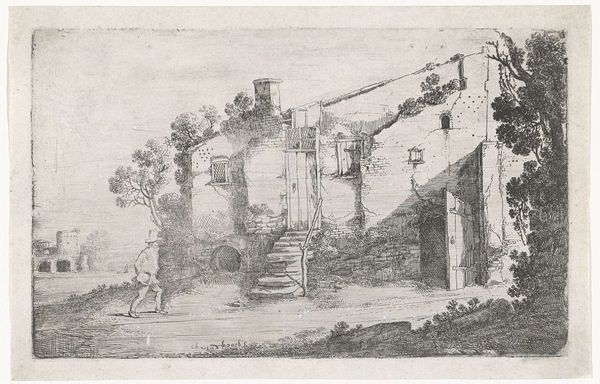
drawing, print, etching, ink
#
drawing
#
pen drawing
#
dutch-golden-age
# print
#
etching
#
landscape
#
ink
#
line
#
cityscape
Dimensions: height 113 mm, width 172 mm
Copyright: Rijks Museum: Open Domain
Curator: Esaias van de Velde’s “Landscape with a Path over a Bridge of Stone and Wood,” created in 1614, presents an intriguing scene rendered with ink as both a drawing and etching, currently residing here at the Rijksmuseum. Editor: It strikes me as both tranquil and strangely melancholic. The monochromatic lines feel delicate, yet they define a robust landscape. It feels as though you can get lost in the Dutch landscape it pictures, especially the detailed representation of stone and wood. Curator: Absolutely. Notice how the lines not only create depth and form but also showcase the materials themselves. The rough texture of the stone bridge, the worn wooden supports, it's all meticulously crafted through the artist's technique. This detailed approach reflects the Dutch Golden Age’s fascination with capturing the tangible reality of their environment. Consider the implications of labor required for such architecture in this early time. Editor: It is so fascinating to notice those details! The bridge, though seemingly ordinary, becomes symbolic, doesn't it? It represents a connection between different realms, a passage from one state to another. In many ways, the bridge functions as a stage where interactions can occur. Take a look at the bottom right and it's difficult to escape the image of people interacting and moving throughout it. It's also the beginning of new life given that it represents transition. Curator: Precisely! Van de Velde highlights the interplay between human activity and the landscape's features. The figures are strategically placed, indicating how humans navigate and integrate with their built and natural environments. Consider, though, that the prints such as these were circulated, bought and sold, making these rural, supposedly idyllic settings a commodity, far removed from their actual physical existence. Editor: True. There's a symbolic weight there too. While people are often at the center of artworks of this kind, they also feel small when framed as they are, nearly fading away compared to their backgrounds. You almost lose their presence and identities as you are transported to a place beyond their immediate reach. Curator: Well, these artistic choices showcase the integration of social practice into what is literally the structure of the land. What looks effortless often reveals how embedded labour becomes within both artistic production and, as is pictured here, material culture. Editor: Reflecting on this artwork, it strikes me that what makes a powerful image often rests in its delicate balances. It has to show what remains on the surface and what moves internally as both transition and transfer. Curator: Yes, by looking closely at its physical makeup, we better recognize not only its technical artistry but also its engagement with society's material circumstances.
Comments
No comments
Be the first to comment and join the conversation on the ultimate creative platform.
